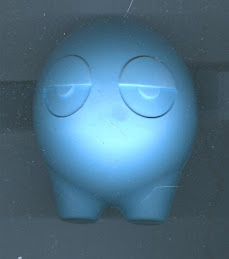I just bought a beautiful replica of a medieval French tapestry- "À mon seul désir". So I researched it and found out that it is a series of tapestries based on the six senses and each one of the pieces depicts a lion, a unicorn and a lady. As a child I had recurrent dreams about a lion, a horse and a fire, so I was struck by the similiarity between my dream and these tapestries. About the dream:
First of all, the whole dream occured in a dead silence. I am standing on what is a concrete field with the corner of a barbed wire fence in front of me. On the other side of the fence is a green pasture and facing me is a fire with a lion to its right and a horse on its left. As the dream progressed I would slowly approach the barbed wire fence. The closer I came to the corner of the fence or to climbing over it, the more agitated (in silence but raring up and pawing the ground) the horse would become. The lion sat still as a stone glaring at me with the fire between it and the horse. When I reached the fence, the dream would start all over with me dreamily walking towards the fence never proceeding over it. I would wake up in a sweat and had this dream maybe 20 times between the ages of 9and 12. When I was in college and introduced to theology, philosophy and Freud (have a minor in them which means I'm stupid with a certificate!) I decided to interpret this dream to see if there were psychological significance. At this time, I realized that Freud's dream interpretations were male chauvinistic and overtly, if not perversely sexual. So I realized that dream symbols were very subjective e.g.
Freud might think a knife is a male apparatus while someone else might view a knife as a form of comfort used to defend themselves. I listed all symbols of my dream and then like the Rorschach inkblot test quickly wrote down what that symbol meant to me. When I pieced it all together I was truly amazed at how this dream reflected what was going on in my life at the time. I think our dreams are very useful in trying to understand what our subconscious is trying to tell us. I try to keep a dream diary and it is like very inexpensive therapy!!! Anyway, next entry I'll let you know what this dream meant but... here is a bit of information about those very interesting French tapestries:
The Lady and the Unicorn (French: La Dame à la licorne) "is the title of a series of six tapestries woven in Flanders of wool and silk, from designs drawn in Paris in the late fifteenth century,[1] The suite is often considered one of the greatest works of art of the Middle Ages in Europe.
The tapestries are commonly interpreted as depicting the six senses - taste, hearing, sight, smell, touch, and "À mon seul désir" (meaning: "to my only desire"), often interpreted as love or understanding. Each of the six tapestries depicts a noble lady with the unicorn on her left and a lion on her right; some include a monkey in the scene. The pennants, as well as the armor of the Unicorn and Lion in the tapestry bear the arms of the sponsor, Jean Le Viste, a powerful nobleman in the court of King Charles VII.
The tapestries are created in the style of mille-fleurs (meaning: "thousand flowers").
The tapestries were rediscovered in 1841 by Prosper Mérimée in Boussac castle (at the time, the subprefect of the Creuse) where they had been suffering damage from their storage conditions. Novelist George Sand brought public attention to the tapestries in her works at the time. The cycle is currently held in the Musée de Cluny (Musée du Moyen-Âge), Paris (France), where it has resided since 1882.
These tapestries are also the central theme of the novels "The Lady and the Unicorn" by Tracy Chevalier, and "The Seventh Unicorn" by Kelly Jones. Recently two 'historical novels' of Pith Schure have seen the light under the title "La Licorne and .....". Together with the final one - expected to be published in 2009 - those will make up a 'trilogy' on the subject.
Source(s):
http://en.wikipedia.org/wiki/The_Lady_an...
By the way, did you know the term "chauvinism" is derived from Nicolas Chauvin, a semi-mythical soldier under Napoleon Bonaparte who is supposed to have served in the French Revolution and the Napoleonic Wars (1789–1815). Despite the unpopularity of Bonapartism in Restoration France after 1815, Chauvin was said to be an ardent supporter and was often seen wearing a violet in his lapel, the symbol of his deposed Emperor. According to the myth, he remained fanatically loyal despite his poverty, disability, and the abuse he suffered. Interesting...
Monday, June 15, 2009
Subscribe to:
Post Comments (Atom)






No comments:
Post a Comment